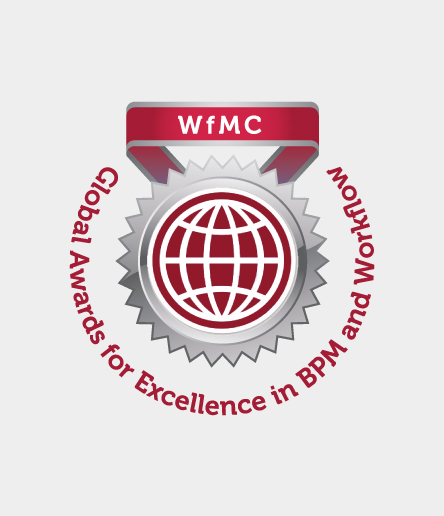Business Process Management (BPM)
To better understand the reasons why your company should look at BPM (Business Process Management), it is first necessary to understand its meaning. For some, BPM is related to information technology. A tool that aims to automate processes.
For others, BPM is a way of optimizing processes and is related to methodologies that aim at efficiency, loss reduction and service quality, such as: Six Sigma, Lean, CI and TQM.
For still others, BPM describes both how work is performed and how changes in tasks are incorporated.
While these definitions are not entirely incorrect, individually they do take a very unique perspective on the functions of BPM.
More than the definitions above, BPM should be seen as an approach that includes a set of disciplines, technologies and methodologies to handle processes, automated or not, in order to achieve consistent results in line with business objectives.



It is estimated that the global BPM market will be worth US$14 billion in 2021, evidence that companies are following this path in their strategies.
About 46% of companies look at BPM only as a way to reduce costs, but the benefits go much further.
Companies with a higher level of BPM maturity point to significant benefits for the business, such as:
Cycle time reduction
90%
Increased productivity
50%
Quality improvement
80%
Costs reduction
35%
Revenue growth
40%
Adherence to regulatory requirements
100%
Other business benefits
- Risk management
- Customer satisfaction
- Competitive advantage
- Agility in transformation and innovation
Operational plan benefits
- Reduction or elimination of human errors
- Elimination of the short cut(which bypasses important tasks)
- Consistency in correct execution of tasks and sequencing
- Understanding on the part of all employees in carrying out their tasks
- Visibility of employee productivity indicators in all tasks
- Visibility of tasks sensitive to increased workload (new bottlenecks)
- Transparency in assigning responsibilities to employees (accountability)
- Visibility for managers of metrics associated with the service performed, efficiency, quality and results achieved
The success of companies is related to the organization's ability to transform in the face of new challenges, but only a few leaders recognize that BPM can help them.
The level of BPM maturity in companies is still very low globally.
The graph below is the result of a recent survey carried out with more than 200 companies in an emerging economy and shows that only 4% of companies measure and manage correctly documented processes.

Processes are repeatable but not managed
Processes are defined, documented, repeatable, but not measured
Processes are defined, measured, but not managed
Non-repeatable processes
Processes are managed and measured
What is your level of maturity in relation to BPM?
Citrine Consulting has a structured methodology to assess the level of maturity in the management of companies' business processes and help in the planning and implementation of a solid BPM strategy for your company.
In a very simplified way, the questions listed below can reveal the level of maturity of your company:
- There is a culture of processes in the company?
- Company leadership understands that processes are important to achieving strategic business objectives?
- Does the company's leadership know the practice of BPM?
- The main processes of the company are properly documented?
- All employees who work, for example, in a mission-critical process, know their role and responsibilities?
- Metrics related to processes are extracted and analyzed
- The adjustments and transformations of these processes are based on these analyzes?
- The company has methodologies and tools to carry out the different stages of the continuous improvement cycle of processes, including, for example: analysis, modeling, automation, execution, monitoring and optimization?
How we can help your company?
The initiatives to review the existing structure and information security planning can assume different objectives and varied scope, depending on the company's need. Below is an example that might apply to your business:

Corporate Planning
Improvement in business processes
With the main objective of promoting the alignment between the main business processes with the company's strategic objectives, this initiative generates a corporate level improvement plan for mission-critical processes.

Business process review
The existing flow of activities and information is analyzed and all attributes, including: alignment with strategic objectives, performance, costs, controls, automation, scalability and adherence to regulatory requirements. The design of the process based on the identified improvements is carried out, goals defined and an implementation plan produced.

Business Process Management
Technology Architecture definition
Definition of an appropriate corporate technological architecture for process automation. The scope of architectural services should be defined and may include modeling, flow construction, simulation, execution and process monitoring services. It may include complementary services such as: ECM, Process Mining Decision Management, iBPM, Robotic Process Automation (RPA)

Business Process Management
Business process automation
Automation of a new flow of activities and information using the BPM solution adopted by the client, including: process modeling tools, simulation, data integration services, construction, tests, monitoring and analysis of metrics, establishing a process of continuous improvement in addition to providing intelligence in the management of the process through the availability of data.
Why Citrine Consulting?
Citrine Consulting has extensive knowledge and experience in reviewing, designing and automating business processes. Its professionals received the global award from the WfMC1 (Workflow Management Coalition) for excellence in BPM2 due to their project to automate the process of opening a relationship for Clients in the financial sector, remaining among the 10 best projects in the world in 2013.
Based on the experience and success of this and several other projects, Citrine Consulting developed its methodology, frameworks and reference model of technological architecture to support initiatives with its Clients.
1 WfMC was founded in 1993 and has approximately 300 software and service companies, including: IBM, Hewllet-Packard, Fujitsu, ICL, Staffware and other large companies in the software industry. WfMC defines workflow standards and best practices, BPM, XPDL (XML Process Definition Language), BPSim (Business Process Simulation), Wf-XML (OASIS asynchronous services access protocol)


